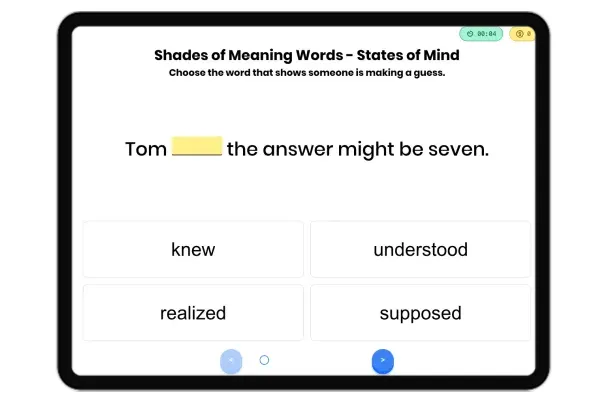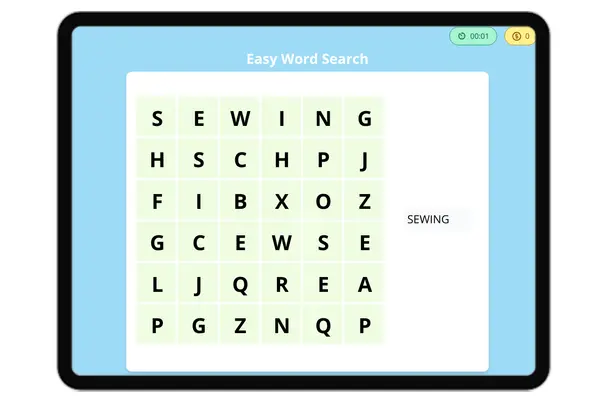Literal Language Worksheet
- 3
- L.3.5.A
- L.3.5
- RL.3.4
This learning resource is available in interactive and printable formats. The interactive worksheet can be played online and assigned to students. The Printable PDF version can be downloaded and printed for completion by hand.
About the "Literal vs Nonliteral Language" Worksheet
Literal vs Nonliteral Language is an educational resource designed to enhance students' understanding of figurative and literal expressions in everyday language. This interactive and printable worksheet presents learners with ten sentences, each containing an underlined word or phrase that needs to be identified as either literal or nonliteral. The activity challenges students to analyze context and meaning, promoting critical thinking and language comprehension skills.
The worksheet offers a diverse range of examples, including common idioms like "under the weather" and "rock the boat," as well as more straightforward phrases that could be interpreted either literally or figuratively depending on context. By engaging with these varied expressions, students are encouraged to think deeply about language use and meaning. This exercise not only improves comprehension of figurative language but also sharpens analytical skills as learners must consider the entire sentence to make their determination. The balanced mix of literal and nonliteral examples ensures a comprehensive approach to understanding different types of language usage in everyday communication.
What will your child learn through this worksheet?
- Differentiation between literal and nonliteral language use
- Interpretation of idioms and figurative expressions in context
- Improvement in reading comprehension and critical thinking skills
- Recognition of the role of context in determining meaning
Learning Outcomes
Cognitive
- Correctly identify at least 8 out of 10 underlined words or phrases as literal or nonliteral
- Demonstrate understanding of how context influences the interpretation of language
Psychomotor
- Enhance fine motor skills by writing "L" or "N" next to each sentence
- Improve visual scanning abilities while reading sentences and identifying underlined phrases
Affective
- Develop appreciation for the nuances and creativity in language use
- Build confidence in interpreting complex language structures
Interpersonal/Social
- Engage in discussions about different interpretations of phrases with peers or family members
- Practice explaining the reasoning behind literal vs nonliteral classifications
Tags
Literal language, nonliteral language, figurative expressions, reading comprehension, context clues, language arts, critical thinking, idioms, vocabulary building, analytical skills
Common Core Standards Covered
Perfect For:
- • Classroom assignments
- • Auto-graded assessments
- • Printable handouts
- • Home learning support
- • Homework help
- • Skill reinforcement
- • Curriculum planning
- • Self-paced learning
- • Progress tracking




















